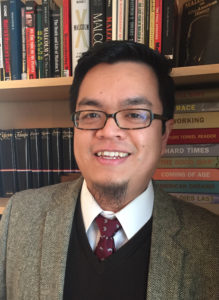teaching comparative theology
Select an item by clicking its checkbox

Comparative Theology in the Millennial Classroom: Hybrid Identities, Negotiated Boundaries
Date Reviewed: September 17, 2016
his is the fourth in the Routledge Research in Religion and Education series. The series editor provides a Foreword distinguishing between religious education as formation within religious institutions and the concern of the series, which is education about religion. In this context, the essays address comparative theology as a process and as a pedagogical method in primarily, though not exclusively, undergraduate classrooms.
Editors Brecht and Locklin provide a concise, effective introduction which establishes an overview of the intersecting thematic components of the collection: comparative theology, particularly the “departure-and-return” model as developed by Francis X. Clooney, SJ., and ways in which the digital culture of the millennial generation impacts epistemology and identity.
The fifteen essays are arranged in three sections. The well-placed first essay, by Judith Gruber, offers a postcolonial critique of the comparative theological model as implicitly essentialist. Essays in the second group address issues of identity raised by millennials and the nature of the millennial classroom in relation to comparative theology. Essays in the third section discuss hands-on examples and specific pedagogical practices. An afterword by Clooney, in which he identifies “six recurring issues” which he finds in the essays and addresses sequentially, concludes the volume. Clooney’s frankly personal account of his own context in developing the departure-and-return model and his rejoinder to the charge of essentialism bring the dialogue to a fitting end.
The diversity of the collection is rich in both content and authorial voices, some of whom are well-established scholars and others of whom are emerging, most teaching in religious studies or theology departments at public or private North American universities, though the balance leans toward Roman Catholic institutional affiliations.
Editors Brecht and Locklin note that this collection is the fruit of a Wabash Center teaching workshop. The robust range of reflection invites readers into the feel of a working group of teacher/scholars who share a concern for facilitating transformative learning in the religion or theology classroom, yet who address this concern and comparative theology’s relevance to the millennial context in quite distinct ways. A brief sampling demonstrates the range of perspectives authors develop: soteriological privilege (Brecht); Muslim theology of tawhid (Hussain); embodiment and material culture (Gasson-Gardner and Smith); storytelling as a pedagogical method of African Traditional Religions (Aihiokhai); comparing dharma and moksha, works and faith, ethics and spirituality (Yadlapati); a voluntary female Jewish-Muslim textual study group (Golberg); and use of film in an online context (Sydnor).
As Jeanine Hill Fletcher writes in her essay, “the work of the comparative theology classroom shares in this important work of shaping citizens in a multifaith world toward tolerance, appreciation, meaningful relationships, and the common good” (149). The same may also be said for religious studies classrooms. Many teachers of religion who are neither theologians nor comparativists by academic training will nevertheless find this collection useful and even inspiring for their pedagogical reflection and practice.
In a time when it is of paramount importance to assert and witness that black lives matter, how do we go about preparing our Islam courses that all too often afford little to no time at all for the societal crises that prevail all around us? This, at least, is ...
